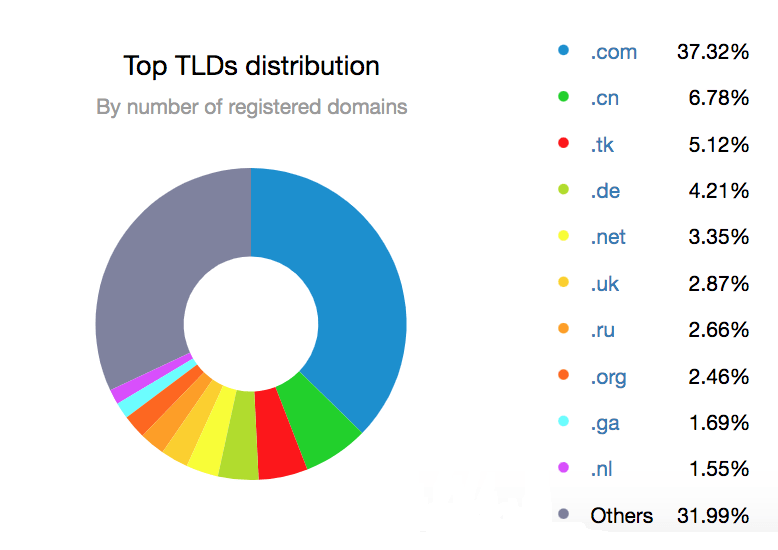
How to Choose a Domain Name: 7 Tips to Make It Easy
May 4, 2021Choosing the right domain name for a new website can make or break the success of that website in a number of ways. For some businesses, there’s a feeling that if they knew how their website domain name was going to impact their business, they would have done things differently. If they had thought more about how to choose a domain name upfront it would have prevented some serious headaches.
With the proper preparation and a few domain name tips and tricks, you can anticipate future obstacles and ensure your business’ website has the best foot forward online.
The Components Of Website Domain Names
Before diving into the best tips for choosing a domain name, let’s take a look at the main components of a website domain. There are 4 key elements of any domain name:
- Protocol/Scheme:
- Sub-Domain
- Domain Name
- TLD (top-level domain)/domain ending
The two website components that matter when choosing a domain name for your new website are the domain name and the TLD, or Top-level domain. The particular combination of domain name and TLD that you choose is what you will be registering with a domain registrar. These two pieces of a website URL play a pivotal role in how successful your website will be.
7 Tips for Choosing a Domain Name
There are a few key steps to choosing a domain name that are important. If you follow these tips it will help ensure that your website domain name is successful. We’ve laid them out to make things a little easier on your voyage to find the best domain name for your new website.
1. Choose A Website Domain Name That Is Easy To Remember And Recognize
The most important aspect of a domain name is that it’s easy to remember and recall. Choosing a domain name that uses unique spelling for a word, unusual syntax, or a name that is very similar to another well-known website or brand is a bad idea. In all of those scenarios, users are less likely to actually end up on your website. They are more likely to spell the URL incorrectly, not remember part of the domain name, or go to another prominent website. Domain names that rely on an acronym are especially prone to confusion. The last thing you want is to send your customers to a competitor because you picked a domain name that was hard to remember or too similar to another company’s domain name.
Don’t let choosing the perfect domain name get in the way of getting started though. Google Domains puts it really well, “An average domain name is better than no domain name.” So don’t feel like you’re settling by choosing an “average domain name” because if people can remember it and find it, it’s a perfectly good domain name.
2. Make Sure You’re Choosing A Domain Name For SEO Success
Some people look back on the domain name they chose and wish they had picked something different. They would have decided on a name that better mirrored the products or services their business offered. Choosing a domain name in relation to the products or services available on the website has to do with how it impacts the website’s SEO potential.
If you’re selling custom throw blankets and pillows on your new website, choosing a domain name like https://www.kittyrockets.com can make it more difficult for your new website to start ranking for keywords like “throw pillow” and “fleece blanket”. In Google’s eyes, your domain name doesn’t have anything to do with pillows or blankets. Include words that help show what you do. Just make sure you’re not stuffing the domain name with keywords either. Balance is important here.
There’s another way your website can be off to a rocky start with your SEO potential and it has to do with purchasing existing website domain names. You should always be wary when purchasing existing domain names because some existing names have had a poor track record and could be banned from Google search results. If the previous owners of the domain name tanked the reputation of the site, it could be so bad that it’s impossible to fix. Always look into the history of previously owned domain names to make sure the website doesn’t have any skeletons in its closet.
3. Choosing a TLD or Top-level Domain
If you’re unfamiliar with TLDs (top-level domains) it’s actually pretty simple. TLDs are just the end of a domain name. For example, .com or .net. Choosing which TLD your domain name will have is a key step on your journey to create your domain name. It’s recommended that unless you have a specific reason for choosing a different top-level domain, all new domains should use .com as the TLD for their new domain name. It’s the most commonly used TLD for domain names and it’s recognized and trusted by consumers.
That being said, there are certain situations where using a different TLD can be justified. If you’re an organization, you should use a .org TLD. And if you’re an accredited educational institution, you should use .edu as your TLD. There are other TLDs that are country-specific (such as .co.uk and .de) that you may consider using, especially if your business is primarily focused on targeting a local or regional audience.
It may seem like the trendy thing to do to pick a unique TLD that makes your website URL name look like the TLD finishes the rest of the word from the domain name. While that is really cool, it can also hinder your website SEO and make it difficult for people to find your website.
4. If You’re Stuck Try a Domain Name Generator
If you’re still having trouble honing in on exactly what you want your domain name to be, try using a domain name generator like one of these:

5. Make Sure The Website Domain Name Is Available
Once you’re decided on your website domain name and TLD, you should make sure they are actually available to purchase. There are lots of websites you can use to figure out the availability of a domain name such as:
6. Consider Snagging Other Similar Domain Names and TLDs
Once you have decided on your domain name and TLD, it’s also worth considering claiming URLs using similar domain names and TLDs to prevent other people from purchasing them and trying to siphon your site visitors. For example, if you bought https://www.kittyrockets.com you might want to buy a URL with a similar TLD like https://www.kittyrockets.net and a URL with a potential misspelling like https://www.kityrockets.com.
Not only will you be able to prevent other people from taking advantage of misplaced website traffic, but you will also have the option to direct any traffic visiting those other sites to your main website.
7. Start Creating Complementary Social Media Accounts After You Have Your Domain Name
After you have purchased your shiny new domain name(s) it’s a good idea to also claim any social media account names you plan to use. This helps create a smooth user experience between your social media and your new website domain name. You may even want to check the availability of the social media handles before purchasing your domain name because slight tweaks could make it easier to claim an entire set of domain names and social media handles that match beautifully.
There are many steps along the path of choosing a website domain name. It can be a very exciting and fun process to experiment with and explore the different possibilities for your new website. We hope this guide helps you on your journey to find the best domain name for your new website.






